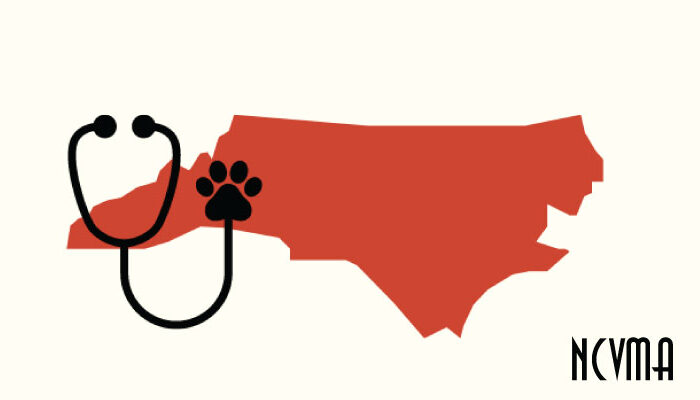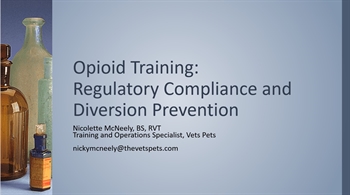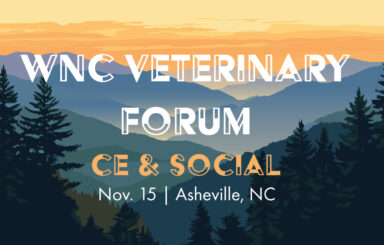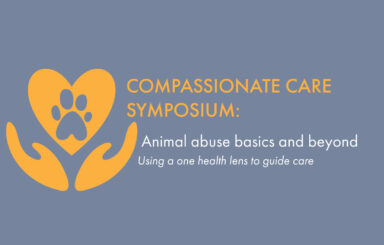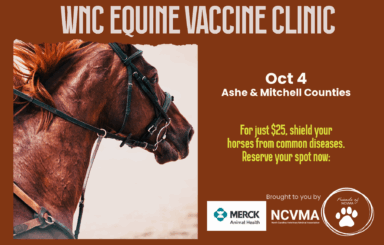by Shannon Bass, DVM
reprinted from the Winter 2024 Veterinarian newsletter
By the time Hurricane Helene made landfall in the Big Bend area of the Florida Gulf Coast as a Category 4 storm late in the evening of September 26, the outer bands were already soaking the mountains of North Carolina. The rain wouldn’t stop for several days, leaving Western North Carolina with historic flooding and landslides that devastated whole communities. Indeed, the storms largest impacts were across the southern Appalachians where high winds and severe flooding resulted in over 230 fatalities and property damage estimated at $53 billion in North Carolina alone. In the 28 counties west of I-75, there were 284 veterinary facilities and 341 NCVMA members. Working with the NC Veterinary Medical Board and the Office of the State Veterinarian, NCVMA worked to establish contact and assess the damages among the veterinary facilities, a task that took on increased importance as time went on.
Four days after the storm, NCVMA officially started coordinating with the N.C. Department of Agriculture and Consumer Services’ Ag Emergency Operations Center to help match veterinary volunteers with needs across WNC. Using a form on our website we collected a list of almost 400 volunteers, some from as far away as California. Initially, the situation on the ground proved too uncertain to send non-residents into the area that had no power, water, gasoline or cell service, so many requests were answered by veterinarians within the disaster zone. NCDA&CS sent requests for veterinarians to treat pets at emergency human shelters as well as existing animal shelters. First responders requested treatment for sick pets in hard-to-reach areas and we matched volunteers to those animals. One volunteer reached a dog via ATV, another reached a horse via helicopter.
As I write this in late November, we remain actively involved in supporting the veterinary community in the western part of our state. We have learned a lot, and will be able to use this knowledge to better respond in the future.
What we learned in Week One
Organization of volunteers is challenging. What are their qualifications and licenses? Where are they located as this determines how fast they can respond and with what frequency? Can they bring their own supplies? Are they prepared to be self-sufficient in a disaster area – sleep in their vehicle, bring their own food/water/gas? When are they available? All this needed to be in a format that was easily accessible, sortable, and sharable.
Everyone is looking for information. NCVMA staff quickly added a disaster page to our website with pertinent information and links, and opened a new email account just for disaster questions.
What we learned in Week Two
By week two we had veterinarians responsible for pets in every emergency human shelter and existing animal shelter, working in conjunction with NCDA&CS. We were supporting a free pop-up clinic operating in the area, run primarily by local veterinarian Dr. Cat Ashe, with help from Dr. Kelly Sulik of Tryon, who allowed use of her mobile veterinary van. Dr. Marti Poffensberger from Pamlico County on the coast loaned a vet truck that was used for two months by a mobile clinic whose van was destroyed. Many vets sent supplies, and we are grateful for the folks at Maiden Large Animal Hospital, Sage Pet Hospital, Western North Carolina Regional Animal Hospital, and Tryon Equine for becoming supply staging and storage areas.
Things change fast! The availability of power, water, and internet were constantly changing. Some roads opened quickly while others remain closed even today. Requests for supplies changed daily. Well-meaning social media posts fueled over-supply as previously met needs would be reposted days later resulting in difficulty storing excess donations. People from all over wanted to help, so the decision was made to create a special line item in the Friends of NCVMA account for disaster response.
By Thursday, October 10, we had five specific projects:
- Continuing to match volunteers with needs from NC Department of Agriculture
- Supporting the Black Mountain Pop-Up with Dr. Ashe.
- Maintaining the practice and shelter status list, using over 30 volunteers to assess their needs, led by Dr. Karyn Smith.
- Coordinating vendor donated supplies from companies including Covetrus, Dechra, Merck, Patterson, Vetoquinol, Virbac and Zoetis, led by Dr. Lissa Capitano.
- Fundraising for the Friends of NCVMA Foundation.
What we learned in Week Three
As the roads opened up, so did the number of helpers. National animal non-profits were suddenly on the scene, as well as out of state vets who had gathered supplies and wanted to come in and help. This happened at the same time most local practices were opening, eager to help their clients. We started talking about the ethical dilemma of providing so much free care for pets, while also ensuring local practices are still in business when all the free care leaves town.
As veterinarians started to assess damage and look for help, the NCVMA staff created new website content with lots of information from veterinary and government groups about disaster loans, grants, and other programs. We saw folks with survivor’s guilt as well as cognitive overload, with both groups having difficulty navigating their options for help.
The donated supplies were harder to distribute than we anticipated. Not because the needs weren’t there, but because everyone felt that other people had bigger needs than their own.
The veterinary community was very generous with financial donations, so we started working on NCVMA grant options for doctors and staff, learning a lot about FEMA and other aid in the process.
What we learned in Week Four
Some people were stable and doing well, while others still didn’t have power, water or internet. Those veterinarians more severely affected still needed supplies, as the lack of business in the first weeks after the storm created cashflow issues, and placing orders was financially difficult. We were happy to be able to meet the needs of multiple animal rescues needing flea/tick prevention as the flood waters caused a massive shift in these parasites and many animals were infested.
Dr. Ashe was still operating the pop-up clinic, moving it to more remote areas and seeing up to 90 patients in a day. But fewer veterinarians were volunteering, as the media cycle had moved on.
What we learned in Weeks Five through Eight
Demobilizing is time consuming and emotional. The borrowed vans got returned to their owners and the volunteer veterinarians were mostly back to work. The last of the donated supplies are finding homes.
The financial assistance we can offer is the significant lasting impact, as the Friends of NCVMA has awarded more than $60,000 to date in community grants to veterinarians and staff, and veterinary practice grants to reimburse veterinary owners for storm related expenses. NCVMA member grants have been harder to award as this grant reimburses for insurance deductibles and insurance isn’t covering much of the damage.
You can still donate to the Friends of NCVMA on our website to help the ongoing needs. If you are from a storm damaged county, you can apply for a grant on our website as well.
We remain grateful to all the people who helped, in all the different ways they contributed, as this was truly a team effort.
